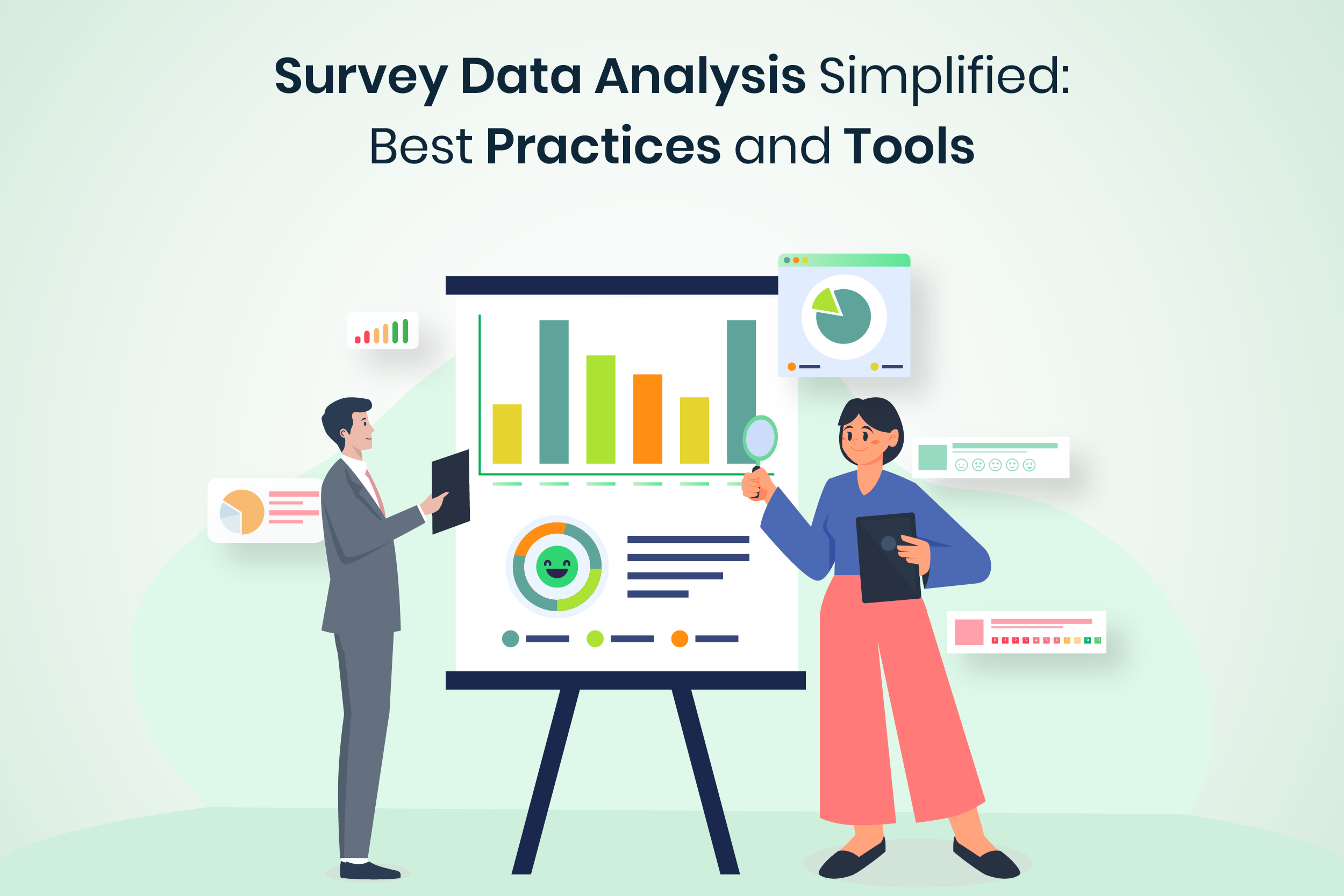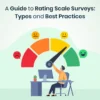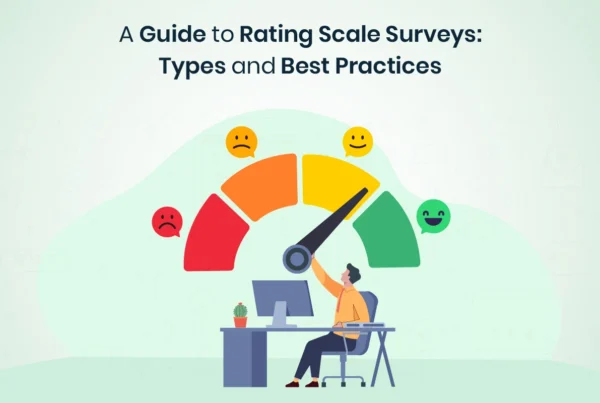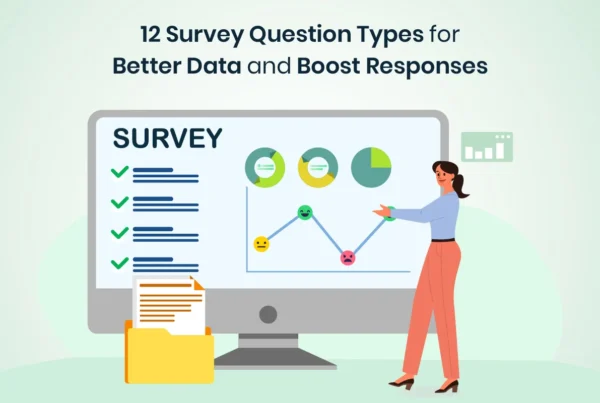Surveys are an effective way to collect insights relevant to customer satisfaction, employee engagement or market trends. But collecting the survey data is only half the battle. Analyzing the data is where the real value lies. Survey Data Analysis takes raw responses and finds the trends, patterns, and insights to inform strategic decision-making.
Having a framework for analyzing survey data ensures accuracy and effectiveness. In this blog, we will discuss best practices, tools, and tips for analyzing survey data.
The Role of Survey Data Analysis
Surveys reflect the opinions of customers, employees, and other stakeholders, and truly understanding them requires more than just glancing at the numbers. Analysis supports strategic decision-making as well as highlighting areas where improvements can be made.
Each survey’s data has its own form of analysis, and managing every analytic makes it possible for a business to better understand the point of view of its customers.
Types of Survey Data
There are two different types of survey data that each require a different type of analysis. The first type is quantitative data, which can be measured and numerical. This data is collected from closed-ended questions, which include multiple-choice questions, Likert scales (with ratings from 1 to 5), and even demographic questions. The advantage of this data is that it’s objective and simple to analyze statistical patterns and trends in large volumes can be detected.
The second kind is qualitative data. This consists of open-ended answers such as text comments, which provide subtle but are more difficult to analyze. These survey data types give deep answers and context to the ‘why’ of the numbers, showing the motivating forces, concerns, and nuances that multiple-choice questions can’t.
Each type of data serves a unique purpose. A strong analysis will tend to combine both, utilizing quantitative information to demonstrate ‘what’ is occurring and qualitative information to outline ‘why.’
The Survey Data Analysis Process
Surveys need to be analyzed in a methodical manner, and businesses need to adhere to a standard approach to be precise and reliable. Data cleaning, arranging, analyzing, interpreting, and visualization form survey data analysis process and they are elaborated below.
1. Data Cleaning: Cleaning the data is the first step. This step involves eliminating duplicate answers, checking for and managing straight-line responses and detecting missing entries.
2. Organize Data: The second step is to organize the data into an analytically structured format. For example, in spreadsheets or databases, the data can be organized in a well-designed format making it easy to handle.
3. Analyze Data: Multiple methods will be employed to analyze the data. For quantitative data, compute statistics such as averages, medians, or percentages. For qualitative data, employ coding to outline repeated themes or sentiment.
4. Interpretation: During the analysis that follows, the findings are interpreted in line with the survey’s objectives.
5. Data Visualization: Use appropriate charts, bar charts for comparisons, and line charts for trends over time to highlight common qualitative themes. Every visual should support a key point.
Modern Survey Analysis
Technology has leaped forward, making manual feedback analysis less practical. AI for survey analysis has arrived, and the latest tools can automatically categorize open-ended responses, detect sentiment, and highlight patterns. They can also handle time-consuming tasks-cleaning data, identify patterns, and generate insights.
But always double-check AI-generated insights to ensure they really fit survey objectives. AI is powerful but the human touch is still needed for context and strategy. By integration AI, analysis can be mechanized without losing precision and insight.
Best Practices for Survey Data Analysis
Even though analysis tools are evolving, leveraging best practices will improve success and viability of the analysis. Best practices verify that results are not only reliable but also have meaningful implications for decision-making.
1. Define clear objectives: Know exactly what business questions are trying to answer with the survey.
2. Balance Quantitative and Qualitative Insights: Numbers provide structure, but open-ended responses reveal context.
3. Avoid Bias: Be open to findings that challenge assumptions rather than only looking for evidence that supports them.
4. Benchmark Results: Comparing current results with past surveys highlights progress or emerging issues.
5. Visualize Findings: Use charts, dashboards, and infographics to make insights easy to understand for stakeholders.
Tools That Simplify Survey Analysis
Different survey software helps businesses optimize the workflow. Most of these have analytics dashboards, separate custom visualizations, and integration with other business applications.
For quantitative data, Microsoft Excel offers powerful statistical features. Excel is handy with simple calculations and charts. Other tools are Tableau, Power BI, Google Cloud’s AI tools.
For reporting, other apps generate interactive dashboards that improve user engagement and retention of knowledge, making the outcomes more accessible. AI solutions can automate pattern recognition and predictive analysis. The suitable tools to use are dictated by the amount of data, and the amount of automation desired.
Tips To Avoid Common Pitfalls
Survey analysis can go wrong without a watchful eye. To avoid pitfalls, here are some tips:
- Consider designing neutral questions and ensuring anonymity
- Prioritize metrics that align with business objectives
- Avoid drawing conclusions from incomplete data
- Ensure that stakeholders have access to data visualizations
These tips would ensure a survey analysis is both credible and impactful providing accurate and holistic insights.
Future of Survey Data Analysis
Customer and employee expectations will get more complex which means the systems will need to be more complex too. Data will be analyzed by machines and algorithms will give recommendations and provide insight on trend prediction instantly. AI systems will give quick analysis of survey results and give recommendations for what to do next.
Organizations which spend on modern approaches and equipment now will develop superior abilities to grasp changing patterns and respond ahead of time and sustain market leadership. Survey analysis functions beyond historical perspective since it serves as a tool for constructing future developments.
Choosing the Right Survey Software
Selecting survey software is crucial for the analysis process. When deciding on a specific survey software, prioritize tools with built-in analytics including automated reports, data visualization, and the ability to export data for deeper analysis in specialized software.
Scalability is another key aspect and ensure the software handles the dimensions of a survey. Effective software streamlines processes and improves the quality of analysis.
Conclusion
Survey analysis is a critical step in turning feedback into action. Without Survey Data Analysis, organizations risk missing valuable insights that could drive improvements in products, services, and experiences. Following a structured process, technology application, and best practices will go a long way to converting raw responses into powerful insights.
Mastering survey analysis is an act of balancing quantitative and qualitative insights. Successful execution ensures that organizations are listening and acting on the voices of stakeholders, thus creating a stronger relationship and ensuring sustainability. The goal of survey data analysis is to spark action.








